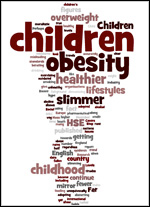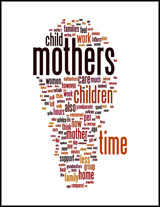Fattened statistics
Recent media coverage of levels of obesity among children in Britain continues to inflate the scale of the phenomenon by using statistical methods that are fundamentally flawed. The Guardian, for example claimed, on the basis of data from the Health Survey for England (HSfE), that "26.7% of girls and 24.2% of boys [aged 11-15] qualified as obese." And yes, that is what the short release from the NHS Health and Social Care Information Centre said as well.
The problem is that these figures are based on the now outdated UK National BMI standards for defining obesity in children — cut-off points that have been described by leading experts in the field as 'arbitrary' and 'confusing'. In a letter to the BMJ back in October 2001, Susan Jebb and Andrew Prentice, both of the MRC Human Nutrition Research Group, said that the choice of cut-off points used to create these figures:
"… effectively inflates the number of overweight and obese children . Exaggerating the absolute prevalence of obesity is ultimately unhelpful since it leads to confusing discrepancies in the transition from children to adults."
This issue was also recognised by the authors of the government's reports on the HSfE some time ago. In the 2003 Summary of Key Findings they noted that:
"About one in 20 boys (5.5%) and about one in 15 girls (7.2%) aged 2-15 were obese in 2002, according to the International classification … In comparison with the International classification, obesity estimates derived by the National BMI percentiles classification were much higher (16.0% for boys and 15.9% for girls)."
Simple arithmetic shows that the National BMI standards used in the Health Survey for England reports exaggerate the prevalence of obesity in boys by nearly 200% and in girls by over 100%. Strangely, however, subsequent reports from the HSfE have not even mentioned the definitional problems and have simply quoted statistics based on the old National standards without any qualification. It is not surprising, therefore, that people, including journalists, get confused.
There is no excuse for presenting data in this way when even organisations such as the International Obesity Task Force, who developed the International Standards in the first place, are urging everybody to stop doing so.
There is, of course, still evidence of an increasing prevalence of obesity among children whichever set of statistics one uses. But a 'real' shift from 3.9% in 1995 to around 7% in 2004 has very different implications from the reported 11.5% to 18.5% rise. The Guardian's headline "Child obesity has doubled in a decade" was also particularly misleading and unhelpful in this context because neither set of figures shows that.
Inflating the figures in this way does not help us to develop sensible strategies for tackling the issues. It allows people to get away with the use of terms such as 'public health time bomb' and gory predictions such as the one from Diabetes UK that "We will soon be seeing our children growing up losing limbs and going blind." As Jebb and Prentice concluded:
"Public health policy will best be served by a single definition of overweight and obesity in children and young people, which is consistently applied. We urge health professionals, scientists, and editors to adopt the International Obesity Task Force's proposed reference standard for obesity in children."
Let us hope that the next reports from the Department of Health take heed of this advice.
Peter Marsh
24 April 2006





